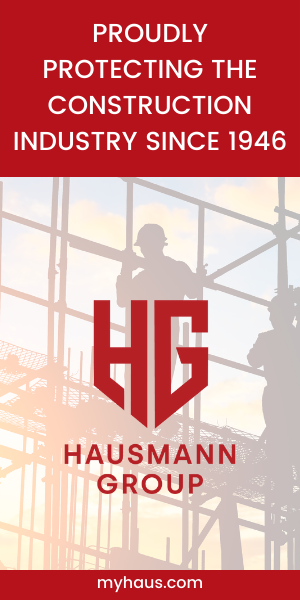By Tanner Wood (Horizon Construction Group, Inc.) & Cullen Schmeling (Stevens Construction Corp.)
“We create a culture of safety by what we demonstrate personally, and by what we reward and tolerate in others”
– Safety 24/7 by Gregory M. Anderson & Robert Lorber
As an owner, executive, or leader within your organization – you probably receive hundreds of questions on a weekly basis. Some might be related to quality control, a ton of questions on operations and productivity, and then you might get a handful of safety questions. There is no doubt that a majority of these questions are a result of a stressed, overloaded, and/or an inexperienced workforce. But how do you respond to all of the questions, requests, or even demands that you get?
Is your immediate response to any of these questions, “Let’s just get it done, we want this in our rear-view mirror?”
Or do you respond with a follow up question such as, “What risk(s) do we face with this?”
By inserting safety-conscious questions and comments into your daily decisions, not only are you making improvements to your culture of safety, but you’re also showing your peers that you care about them. There’s a human element to a “World-Class Culture of Safety” that often gets overlooked. When you emphasize care and concern into your daily meetings, your people see you as a leader, not a manager.
But let’s take it one step further. Are the people you lead doing the same with the people they lead? How far are you broadcasting your emphasis on safety and risk tolerance? I can guarantee that almost every Foreman, Superintendent, and/or General Manager thinks, “What would my leader want me to do in this situation?” during something you are not necessarily involved in. But when you consistently emphasize care and concern with that person, it allows them to do the same with the personnel that they lead.
Cultivating a culture of safety is when you start to demonstrate to your workers that they are SAFE. But what can the feeling of SAFE mean?
- Yes, it means that they are SAFE from risk of injury.
- It can also mean that they are SAFE to bring up concerns about their job, their team, and their environment.
- Most importantly, it can also mean that they feel SAFE to bring up personal concerns; perhaps about their current state of mind due to something outside of work.
When we show empathy and care about our people, it allows them to tear down walls by working towards an integrated team. In construction, it is very easy for our teammates to put up a false façade and bottle up their issues. Our teammates will be stronger if they can be vulnerable – to allow for gradual improvement to their self-awareness. While leaders need to foster an environment built on empathy, we need to allow our people to work through their self struggles so that they feel SAFE. And once you allow your people to feel that way – they will pass it along to their people.
After all, we are human. Facing this head on is the absolute reality that our industry needs to hear and feel. Stacking resources and training to help will be paid back greatly in how a person feels about their work and the care they have to do good and produce the highest level of results.












